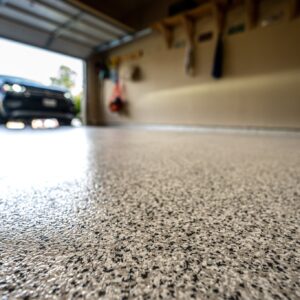Q: What does pollen look like on a car?
Pollen looks like yellow dust or powder to the naked eye, although some pollen types are green or pink. Individual grains can have either a fine or coarse texture. When it builds up on the car’s external surfaces, it forms a layer that slowly but surely thickens.
Trivia: Pollen never deteriorates. It is one of the few natural substances that lasts indefinitely.

If it’s springtime and you live where there are a lot of pine trees or other pollen-producing trees, you’ll see this dust on your vehicle and on everything else.
Pollen is the microscopic grain produced by plants during their reproductive cycle. It is released into the air and carried by the wind over long distances. Pollen grains have tiny hooks that can cling to surfaces and irritate sensitive flesh. Depending on factors like the location, local plant life, and season, pollen usually starts spreading during spring and ends before fall. Usually it disappears a few weeks into springtime, depending on the region.
Pollen can trigger allergy attacks when touched or inhaled. Furthermore, pollen becomes acidic when mixed with water. Moist pollen can erode the paint’s protective coating, increasing the chances of corrosion and physical damage. If ignored for long periods, pollen can leave stains that are difficult to remove and weaken the paint.
Tips on How to Remove Pollen From Your Car
Regularly wash your car to minimize the harmful effects of pollen on your car. Use soapy water with lots of suds to lubricate the pollen grains, making it easier to detach the pollen from the surface. Wipe the remaining pollen using a microfiber towel while taking care to avoid scratching.
After washing your car, apply a fresh coat of wax as soon as the recently cleaned surfaces dry. The wax coating blocks pollen from directly touching the paint, preventing the pollen from damaging your car. Wax also protects against other problems, such as dirt and UV rays.
Consider applying a ceramic coating to your car for long-term protection. Like wax, the ceramic coating forms a protective layer on your car’s treated surfaces. It prevents contaminants from directly touching the paint, making it easier to get rid of pollen and keep the car looking pristine.
Any information provided on this Website is for informational purposes only and is not intended to replace consultation with a professional mechanic. The accuracy and timeliness of the information may change from the time of publication.
































